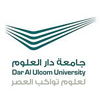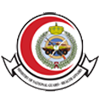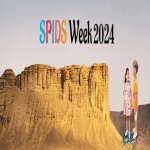Updates in the Treatment of AmpC-Producing Enterobacterales
Classical Presentation- Objectives:
- This presentation will cover the following:
- Understanding the mechanism of AmpC-mediated resistance
- Discussing the previous management of AmpC-producing Enterobacterales
- Presenting the updates in the management of AmpC-producing Enterobacterales (including IDSA updated guidelines)
- The novel antibiotic and combination therapy options
Current Treatment Approach for CRAB
Classical PresentationObjectives:
This presentation will cover the following:
Understanding the mechanism of resistance and the threat of CRAB
Identifying genotypes that underlie resistant phenotypes
Discussing the traditional management of Acinetobacter spp.
The clinical challenges of CRAB treatment
The characteristics and roles of new agents
Proposed treatment strategies for CRAB
Therapeutic Drug Monitoring (TDM): An Underestimated Powerful Tool
Classical PresentationObjectives:
Clear the ambiguity around “Therapeutic Drug Monitoring”! This presentation will cover the following key points:
Understanding TDM and the importance of dose optimization
Understanding different related terminology (e.g., trough, peak, area under the curve), their indications, and relevance
Understanding the basis of dosing, intervals, and special administration methods (e.g., extended infusion time)
The crucial role and utility of TDM in the treatment of infectious diseases
Practical and novel approaches to therapeutic drug monitoring and antibiotic dosing
Staying Ahead of Infectious Diseases: Pipelines Corner
(Co-organized with the Saudi Society of Clinical Pharmacy) Presentation and Open DiscussionObjectives:
This session will introduce you to the recently approved and soon-to-be-approved antimicrobials. It will keep you one step away from using the novel antibiotics, antifungals, and antivirals. It additionally covers issues related to their use, spectra, indications, and limitations. Look no further; join the antimicrobial pipeline session!
SPIDS Plenary: Ventilator-Associated Pneumonia: Connecting the Dots
Open Discussion (Forum)Objectives:
A general and thorough review of ventilator-associated pneumonia that touches on:
The current definition of VAP in pediatrics
Diagnosis-related issues such as the challenges of establishing an accurate VAP diagnosis, sampling (the role of mini-BAL), the performance/positive predictive values of different diagnostic parameters (e.g., respiratory symptoms, ventilatory parameters, radiological findings, etc.)
Therapeutic-related issues (e.g., the role of combination therapy, empiric use of anti-staphylococcal and anti-pseudomonal agents, the impact of the recent CLSI breakpoint changes on the empiric and definitive use of aminoglycosides, the duration of therapy, the role of inhaled antimicrobials)
The impact of MRSA screening on treatment
Empiric Antibiotics in the NICU: Is It Still Aminoglycosides?
Classical PresentationObjectives:
Are we moving away from our long-standing practice for neonatal sepsis, or are we still holding tight to ampicillin and gentamicin? Define your future practice after this eye-opening presentation, which includes:
A brief overview of the current practice (ampicillin/aminoglycoside) for neonatal sepsis, the origin behind this recommendation, rationales, and the validity of this recommendation in the present time
The indications/scenarios where deviation from this practice is recommended and the appropriate alternatives
The impact of the new CLSI and EUCAST aminoglycoside breakpoints on these recommendations
Challenges and limitations
Understanding Culture-Negative Sepsis
Classical PresentationObjectives:
Do you believe in “culture-negative sepsis”? This presentation will answer this question and many others:
What is culture-negative sepsis in newborns?
Are we diagnosing culture-negative sepsis? What are the criteria for culture-negative sepsis?
The role of common laboratory biomarkers and diagnostic imaging
When to treat culture-negative sepsis?
How culture-negative sepsis compares to culture-positive sepsis (morbidity and mortality)
Management considerations (e.g., the role of de-escalation, duration, etc.)
Perinatal HIV: The Current Approach for Prevention
Classical PresentationObjectives:
This presentation will cover the following issues:
Epidemiology of perinatal HIV infection
Risk factors that lead to increased perinatal HIV transmission (regionally)
Preventive measures needed to prevent perinatal HIV transmission to children
Highlights on the recent changes in the recommendations for the prevention of perinatal HIV transmission, including the local recommendations
Imaging Approaches for Patients with Fever of Unknown Origin
Classical PresentationPending
Immunomodulators: A Magic Bullet or Just One Piece of the Puzzle?
Classical PresentationObjectives:
Have you ever heard of immunomodulators and their roles in infections? Take a closer look and learn:
The basics of immunomodulators, mechanism of action, and impact on immune function
The roles and effectiveness of immunomodulators in infections
Risks of use (if any)
Challenges and limitations
Examples of immunomodulators that are currently in use
Example infectious diseases where immunomodulators are recommended
What Is Hot and Not Hot in Stool?
Classical PresentationObjectives:
A deep dive into one of the daily and widely used tests by infectious diseases practitioners, this presentation examines the impact of different stool tests and results. It includes:
Highlights on stool as a diagnostic tool for infection and the different tests that can be performed
Recognizing the wide array of pathogens that could be detected in the stool
The significance of various detectable pathogens in the stool
When to treat and when not to treat (pathological vs. non-pathological pathogens)
Other related issues
(Afternoon Poem) Infectious Diseases Career: Salty and Sweet
Poem-Type PresentationOverview:
With so many options available, choosing to be an infectious diseases physician is not the easiest road. The infectious diseases career might sound overly daunting, with ups and downs, yet there are always those moments of joy, achievements, and satisfaction.
In this humor-tinged poem, Jennifer Tam features a diary of an infectious diseases physician and the struggles faced in day-to-day practice
, full of lessons and insights. Don’t miss it!
Medical Marvel Minds Battle the Bugs with Hassan and Muath
An Interactive, Competition-Style SessionOverview:
Who knows the answer?!
The best-ever competition in Pediatric Infectious Diseases. Groups of trainees compete against each other in a friendly and entertaining environment, with great excitement and exhilaration. Marvelous Hassan and Muath add even more vibes. If you’re an adventurous trainee, get recognized and be one of the Medical Marvel Minds competitors to win our precious prizes, or simply get your coffee and enjoy the non-traditional SPIDS Week learning experience. Learn with no pressure—SPIDS Week is a must!





